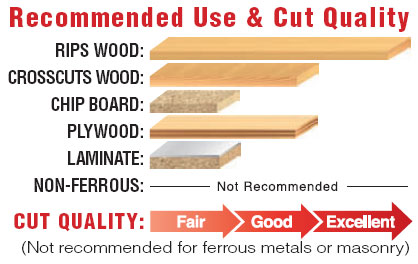"The Right Tool for the Right Job"
Most 10 inch wet tile saws fall into the categories of home improvement, remodeling, and professional construction. However, homeowners and rock collectors may find this tool very useful as well. It provides a professional look for the do-it-yourselfer and can cut tiles in situations where nippers are difficult to use. These clean cuts, from the wet tile saw, minimize breakage of tiles and can save you money in the long run. Although tile nippers and cutters are less expensive, the risk of breaking tiles is greater. If you choose not to buy a wet tile saw, then consider renting one, as you will likely save money.
Saw Blade 10
Ten inch tile saws typically have more than 1 1/2 horsepower and are mostly built with tough, non-corrosive materials. They also weigh approximately 60-130 pounds, depending upon the various features and type of stand that they come with. These factors make the 10 inch saw durable and dependable.
These saws are versatile and have the ability to cut ceramic and porcelain tiles, but also stone, marble, granite, masonry, and even glass depending upon the blade which is used. Not only can these saws cut different materials but also the larger sizes of tiles. A smaller saw just can't match up to the cutting ability of these saws and the range of material that they can handle.
Wet tile saws also minimize the harmful dust particles that become airborne with dry cutting blades. For the do-it-yourselfer, who will remodel their home, this is a helpful and useful feature. It decreases the dust throughout the home thus minimizing mess and the potential aggravation of allergies.
The following categories should be the things that you consider when purchasing a 10 inch wet tile saw.
1. Horse Power (HP) - Most 10 inch saws will have 1.5 HP which is more than adequate for cutting all of the typical materials.
2. Blade Tilt - This is used for beveling the material being cut. Some saws make it easy to cut 22 1/2 and 45 degree cuts. Others offer jigs to make these cuts.
3. Blade RPM's - RPM's range from 2700 to about 4200. More is not necessarily better. 3600 RPM's seems to be about the average for the saws researched for this article.
4. Plunge and Plunge Capacity - Most of these 10 inch wet tile saws have a plunge feature that is very handy when you are trying to make cuts for outlets or registers. Keep in mind the material that you will be cutting and its thickness. The plunge capacity should be about 3' to 3 3/4" for most of the thicker materials like masonry.
5. Rip/Diagonal Cutting Capacity - How long of a cut can you make? Expect 20-24" lengths for straight cuts and you can cut an 18 inch tile on the diagonal with the majority of these saws.
6. Size and weight - This is a category where some of the companies begin to stand out more than others. These saws get heavy fast with many of their weights up around 100 pounds. Some, however, like the DeWalt D24000(s) weighs in at 69 pounds. This makes it easier to transport from site to site or to get it out of storage. Size can also be a factor. The typical dimensions of these saws are around 36"x26".
7. Stands - Stands are another category where manufactures have tried to stand out. Some are simple, folding stands. Others are more intricate, like the Husqvarna Tilematic. It has a patented, adjustable stand with wheels and a spring assist for ease of adjustments. Look for the wheels with these saws or if they have the capability of adding wheels. Especially if you plan on moving this saw around from room to room.
8. Integrated Features - Rails that are integrated into the saw tend to be more accurate and stable. Miter features are often built in as well since this is a cut used often.
9. Lockable Shaft - Although this is not a necessity, it is a convenience to make the saw blade changes easier, especially if you are switching back and forth between profile blades.
10. Lights and Laser Guides - Only one saw researched (Lackmond) had these features, and in this humble author's opinion, all should have these devices. An added LED light can illuminate the work area and with a laser guide you can ensure an accurate cut and safety.
11. Water Trays, Tanks, Pumps, & Nozzles - These are an entire system in themselves and is another area that manufactures strike out on their own to come up with something inventive. DeWalt & MK Diamond have their own types of water systems that help to keep the over spray to a minimum. However, If you put aside these enhanced features, the most important factor is making sure that the wet tile saw blade stays wet. These blades cut through friction and to make them last you need to keep them cool. Most of the saws do a good job at keeping the blade wet. Also keep in mind the placement of the pumps. You want water free of any debris. Some systems recycle the water placing the pumps at risk of picking up the debris in the water trays.
Whether you are a contractor or a homeowner, there is a lot to think about when investing in a 10 inch wet tile saw. Your informed decision will make you happy in the years to come as you use your purchase over and over again.
Don't forget your eye protection!












